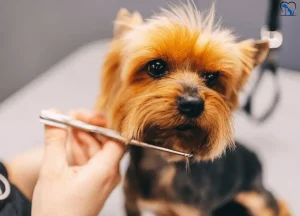Having more than one pet can be fun for both the owner and the animals. However, it’s not uncommon for pet sibling rivalry and jealousy to also be really challenging. But this is not always talked about and can come as a surprise to owners.
Whether you have multiple goldendoodles, multiple cats, or a combination of different animals, sibling rivalry can occur. Understanding the relationship and dynamic, as well as tips to handle it, can be helpful.
What is Pet Sibling Rivalry?
Much like human sibling rivalry, pets can experience the same thing. Emotions such as jealousy, aggression, and competitiveness are exhibited when one or more pets feel they are getting a lack of attention.
This can be shown in a number of ways, such as the pets fighting over food or toys or a serious need for affection. They can even get aggressive with each other if not managed properly.
What Causes Pet Sibling Rivalry?
Understanding how pet rivalry can get started is important to avoid putting your pets in that situation. Here are examples of what could cause pet sibling rivalry.
- A pet marking its territory can cause sibling rivalry. This is because one animal can become threatened when the other comes into their perceived space.
- Any animal that has to compete for resources is more likely to have a rivalry with other pets. Resources can include food, water, and attention from their owner. Competition can feel like praise for one animal and not the other.
- Animals can have personality differences. Just like some humans don’t ever get along or see eye to eye, our pets can feel the same way about each other. Spaces where resources are scarce or contested, such as areas with limited food bowls, water dishes, or toys can be provoking. Other provoking environments could be small or confined spaces where pets cannot easily avoid each other, leading to increased stress and potential conflict.
- Some animals may have grown up with limited socialization, similar to the concept of “only child syndrome” in humans. When such a pet encounters another that is more socially experienced, the less socialized one might not know how to interact properly. Therefore, exposing pets to other animals from a young age is important for their social development.
- Also, similar to humans, some animals don’t like their routines to be disrupted. If they have pre-exposure to constant movement or instability, this can make matters worse.
Tips to Tackle Pet Sibling Rivalry
Here are the best tips and tricks you can implement when you notice your pets are having issues with each other.
Getting in the Routine
Establishing a daily routine is crucial for pets, as it helps them feel secure and reduces anxiety. Renowned veterinarians at Bond Vet Hospital, Edgewater, NJ, highlight that when pets know when they’ll be fed, have playtime, or go for a walk, it creates a sense of stability and predictability. This regularity helps minimize stress-related behaviors, leading to a more balanced and well-adjusted pet. A consistent daily routine can significantly contribute to your pet’s overall well-being and happiness.
Separate But Equal Resources
Having separate resources is important. But please make sure they are equal, as jealousy can ensue. If not separate food and water bowls is an important one as they can rely on getting their own portions and not have to guard. Groom your goldendoodle siblings separately to allow them space and time.
You can also look into bringing home best gender combinations as it is a known fact that having a balanced mix of male and female dogs can help reduce dominance conflicts and promote social harmony within the group.
Love Equally
Attention is a big one. They should receive individual attention and attention together, knowing that they don’t have to fight over who’s the favorite. Bringing them together on walks, buying them equal toys, and giving them equal playtime is a great place to start.
Positive Reinforcement For Good Behavior
When your pets spend time together and aren’t fighting, it is important to encourage those behaviors. Positive reinforcement like separate but equal threats and love and affection will help promote that they keep doing good behavior.
Supervision
If you experience any pet sibling rivalry, keep supervising their interactions. Without intervention, their rivalry can become aggressive, and one or both pets can become injured and can also further the divide between animals. In situation like this you need to know how to handle situation when they become uncontrollable.
Calling In a Pro
Sometimes it can be difficult for a pet to handle sibling rivalry. There are professionals who are trained to help dogs and other animals get along in their household. This may be worth the investment to ensure everyone’s safety.
When it comes to getting a professional involved, it’s important to choose the right fit. Getting reviews not only online but also from people who have used this professional is important. Looking for certifications can also be helpful.
Adjustments One by One
When it comes to working with your animals. It may take quite a few adjustments to figure out what makes a pet or the other territory is half the battle, but as an owner bringing patients understanding in love can help reduce and ease any anxiety they might be having.
First, consider what is causing the behavior and look in words as an owner. Sometimes we don’t even understand what we may be doing to contribute to the situation. Other times, we must consider that it is a personality factor, and making adjustments can help the situation.




